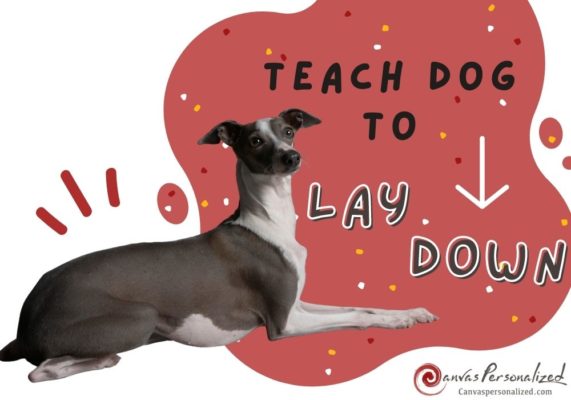Teaching a dog to stay is one of the most challenging tasks for dogs to learn. However, there are many real life scenarios in which you would benefit from having your dog understand the stay command. For instance, you may want them to wait until you’ve dried them off with a towel before going home after a muddy stroll.
“Stay” is perfect for dogs who have already mastered the sit position. It may be time-consuming, but the result is well worth the effort. Here’s a detailed explanation of how to teach a dog to stay from Canvas Personalized Blog.
1. Teach a Dog to Stay Step-by-Step Guide
Step 1: Release word, release cue in a quiet space
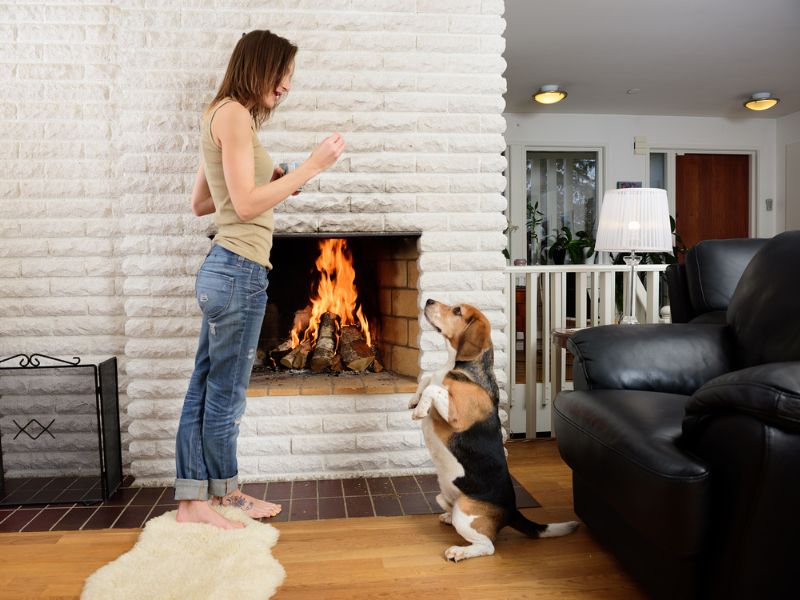
To begin training your dog to stay, choose a quiet, comfortable area with few distractions with which the dog is already familiar. It’s expected that this will make them less curious about going on adventures or easily distracted.
It’s also essential that your dog be relaxed before you begin teaching. If they tend to be more active than average, dog owners consider trying it after the dog has gone on a walk.
Whether it is the sitting position, lying down position, or standing position, a dog may be taught to stay. Choose the position that is most comfortable for them. The selection of a stay cue word and its consistent use is also required. Any verbal cue like “Stay” or “Wait” that dog owners prefer would be perfect for teaching a dog to stay.
Step 2: Reward your dog after they stay a few seconds

Your dog will respond better to your stay commands if rewarded for getting the right attitude. Then, with a clear release cue of your hand signal, tell your dog to “Stay” verbally. A good release cue is to raise your hand, palm down, and outward. Remove the hand signal and immediately treat your dog with verbal praise, a favorite toy, or whatever training treats they love before moving.
You’ll need to move quickly, so you may want to get some practice before bringing your dog along. To advance to the next level, you must first complete this task five times in a row without your dog getting up before you get a chance to reward them.
Step 3: Break the eye contact
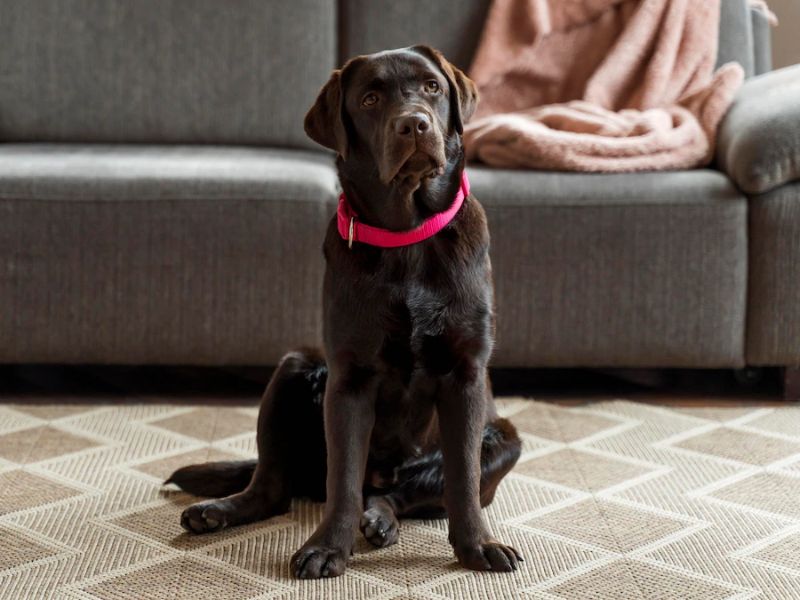
Now, you’ll do the same steps again, but when you use your hand signal, look away from your dog this time. Once again, reward them for their hard work in the stay training session. This is a terrific dog training tip to put a dog’s staying skills to the test since they will be more likely to wait if you are looking at them. After your dog has mastered this level of training, you may go on to the next step.
Step 4: Repeat, but increase the delay
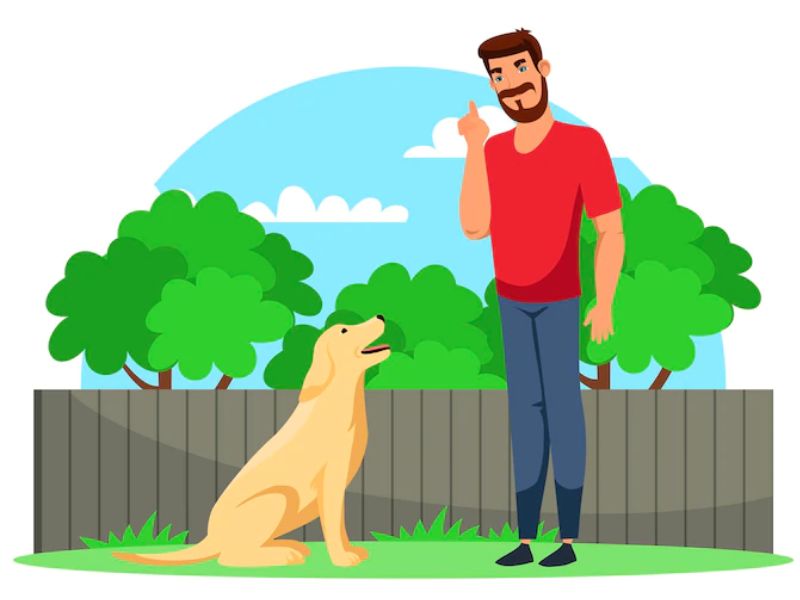
The next step is slowly increasing the time before rewarding your dog. Each dog is going to have a different experience with this. Some may only allow increases of one second at a time, while others may allow increases of up to 30 seconds.
Don’t forget to keep track of his progress when you increase the time you practice each time. If your dog moves, you may have set it up too soon. If that’s the case, you’ll want to use positive reinforcement with a shorter duration and gradually increase it.
After your dog has been successful five times a row, you may consider gradually increasing the time.
Step 5: Repeat, but increase the distance
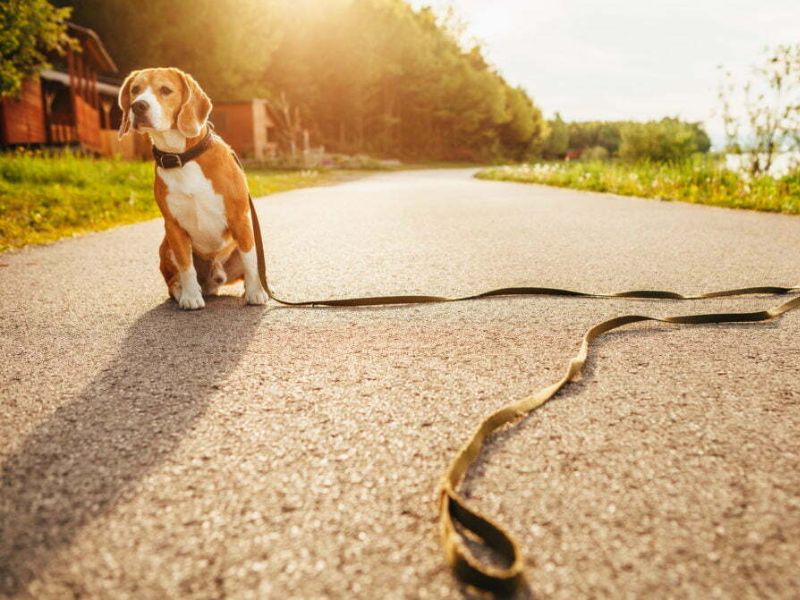
After that, you may gradually increase the distance between yourself and your dog while they stay. Make sure your dog has mastered the “stay” command for at least a minute and a half before trying this.
Step away from your dog after asking for a stay and then return to reward it. You may need to decrease the amount of time you ask your dog to wait before you can increase it again if the distance becomes too great for him or her.
If they struggle with this or seem very sensitive to movements, you may want to use positive reinforcement and just move your body away instead of the longer length.
Step 6: Make it more challenging

Once you can walk freely about your dog while they are in a stay, try to quickly disappear from view before returning to give them a treat. If you want to test your dog’s ability to control his or her behaviors, try adding distractions like toys or dancing. Build things up gradually, as with all the previous phases, and if behaviors begin to fail, go back and start again.
Step 7: Change the training location

You may switch to a different one when your dog understands the “stay” command in a familiar environment. Your dog may be taught a release word, such as “OK,” to recognize when the stay ends. However, you must always return to your dog to free them. To avoid confusing your dog, never call him out of a stay.
2. Things for Dog Owners to Avoid
To train a dog to stay, it’s important to have a lot of patience on everyone’s side. Be calm at first, but have a cheerful attitude and generously reward your dog for good behavior. Listed below are some examples of unacceptable behavior:
Don’t Get Frustrated
When your patience begins to wear thin, take a break and come back to it the next day. Don’t attempt to speed things up too much.
Don’t Make them Stay for Long Periods
You shouldn’t tell your dog to wait if you’re going to be gone from home for a while, like when you go grocery shopping or take a lengthy shower. The wait command should only be used for short periods to keep your dog safe. Never keep your dog in a stay for an extended length of time if you want to build trust with him.
Avoid Unsafe Situations
Only in secure settings should you have your dog sit. Not letting them out of your sight at a dog park or on a busy roadway is one such example.
3. Why Train Your Dog to Stay?
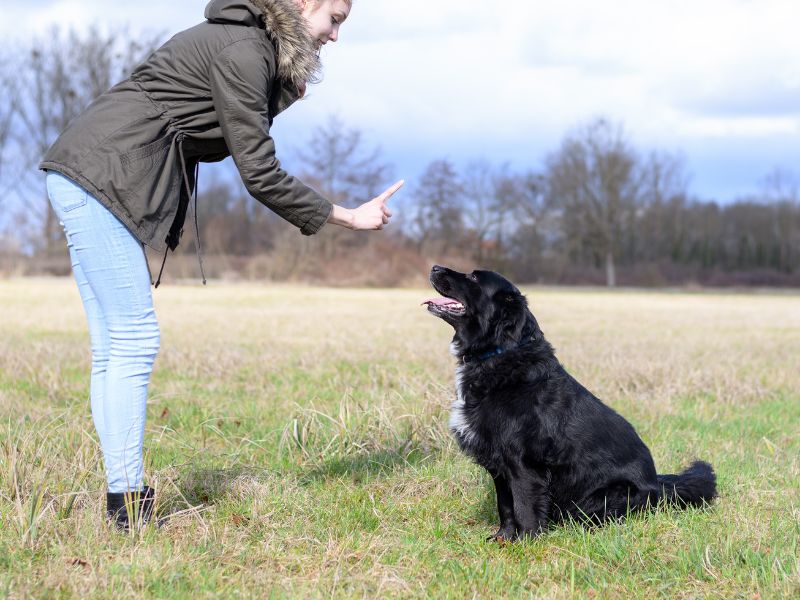
Training your dog to obey the “stay” command is a must. Training a puppy is an excellent technique for instilling a sense of discipline and obedience in your pet since it is one of the essential behaviors you can teach.
In addition to helping your dog learn self-control, teaching the dog to stay will keep it out of harm’s way. Also, it helps develop a bond of trust between the pet and the owner. Not only does a well-trained dog reduce the risk of harm to humans and other animals, but it also decreases the probability that the dog may jump up on visitors, run out the front door, or behave inappropriately.
4. FAQs about How to Teach a Dog to Stay
Can I use another command word instead of stay?
Since your dog doesn’t know the term “stay” meaning until you teach it, you’re free to use whatever word you choose as the stay cue. To minimize misunderstandings, our experts advise coming to a single, concise word. The same is true for your release word.
Can I teach my dog to stay without treats?
It is possible to teach a dog to stay without using treats if you select things that are appealing to your dog. However, many pups have a high desire for food. Therefore, it’s potential that your training efforts would be more effective if you had a tasty treat in hand. Keep in mind that many dog training rewards are already little, which may benefit in preventing the snacking problem.
Can I teach a senior dog to stay?
A senior dog can be taught to stay, of course. Training your adult dog to utilize a stay position might be enhanced by placing them on a soft bed. If they are dealing with arthritis or another health problem, this might help them remain cheerful and concentrated.
>> Read more:
- How To Teach A Dog To Heel? – Best Tips For Naughty Friends
- How To Teach A Dog To Roll Over Quickly In 3 Easy Parts?
How to teach a dog to stay effective relies on selecting the appropriate reward. If you don’t give your dog anything to enjoy while you’re gone, he’ll follow you instead of staying still. Teaching even the most basic commands takes time, effort, and consistency. Put in the work, and you will see results. For more tips about training dogs, do not miss out on any post from Canvas Personalized Blog!




